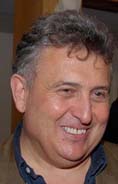 Prof. Felix Aharonian (School of Cosmic Physics) was elected Vice-President of the new IAU Division D (High Energy and Fundamental Physics) at the General Assembly of the International Astronomical Union held in Beijing in August 2012.
Prof. Felix Aharonian (School of Cosmic Physics) was elected Vice-President of the new IAU Division D (High Energy and Fundamental Physics) at the General Assembly of the International Astronomical Union held in Beijing in August 2012.
Felix Aharonian is Professor of High-Energy Astrophysics in the Astronomy and Astrophysics section of the School. He is a world-leading expert in the phenomenology of high-energy, non-thermal astrophysics and astroparticle physics. He is a recipient of the Rossi prize of the American Astronomical Association and a foreign member of the Armenian Academy of Sciences, as well as being an external scientific member of the Max-Planck society. He was recently admitted as a Member of the Royal Irish Academy.
The International Astronomical Union (IAU) was founded in 1919. Its mission is to promote and safeguard the science of astronomy in all its aspects through international cooperation. Its individual members – structured in Divisions, Commissions, Working groups and Program Groups – are professional astronomers from all over the world, at the Ph.D. level and beyond, and active in professional research and education in astronomy.
http://www.iau.org/scientific_meetings/iau_ga_2012/new_divisions/
Leave a Comment
Last Updated: 23rd May 2018 by Anne Grace
August 2012 – DIAS Professor elected Vice-President of the new IAU Division in High Energy and Fundamental Physics
Felix Aharonian is Professor of High-Energy Astrophysics in the Astronomy and Astrophysics section of the School. He is a world-leading expert in the phenomenology of high-energy, non-thermal astrophysics and astroparticle physics. He is a recipient of the Rossi prize of the American Astronomical Association and a foreign member of the Armenian Academy of Sciences, as well as being an external scientific member of the Max-Planck society. He was recently admitted as a Member of the Royal Irish Academy.
The International Astronomical Union (IAU) was founded in 1919. Its mission is to promote and safeguard the science of astronomy in all its aspects through international cooperation. Its individual members – structured in Divisions, Commissions, Working groups and Program Groups – are professional astronomers from all over the world, at the Ph.D. level and beyond, and active in professional research and education in astronomy.
http://www.iau.org/scientific_meetings/iau_ga_2012/new_divisions/
Category: News
Recent Posts
DIAS Astrophotography competition goes mobile for 2024
Irish scientists are part of groundbreaking discovery with James Webb Space Telescope
Dr Pauline Gagnon (formerly of CERN) to deliver two talks at DIAS
DIAS Professor announced as next President of the European Southern Observatory’s Council
Quake Shake: New programme encourages people to get involved in monitoring earthquakes
Language switcher